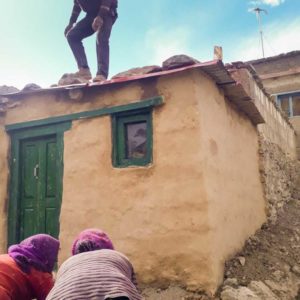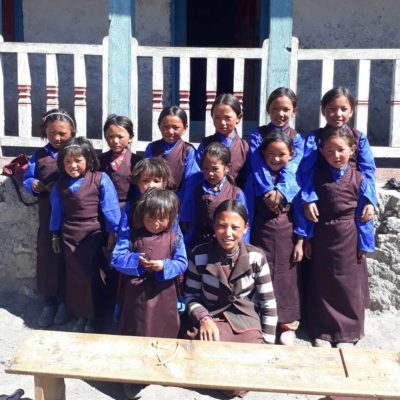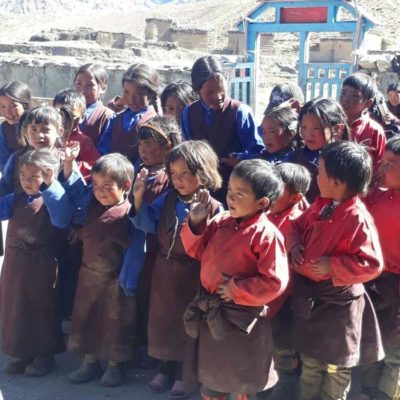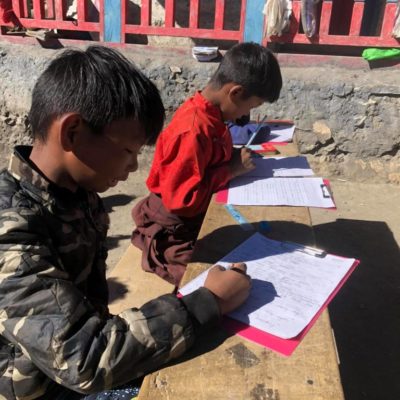
Komang Himalayan Darlarong Primary School
The village of Komang is in an isolated valley and the name comes from a rare plant that grows here. The village is home to ~ 200 people and typically has 30 students from kindergarten to grade 5. The students must move on to Kathmandu and board at the village hostel to continue their education.
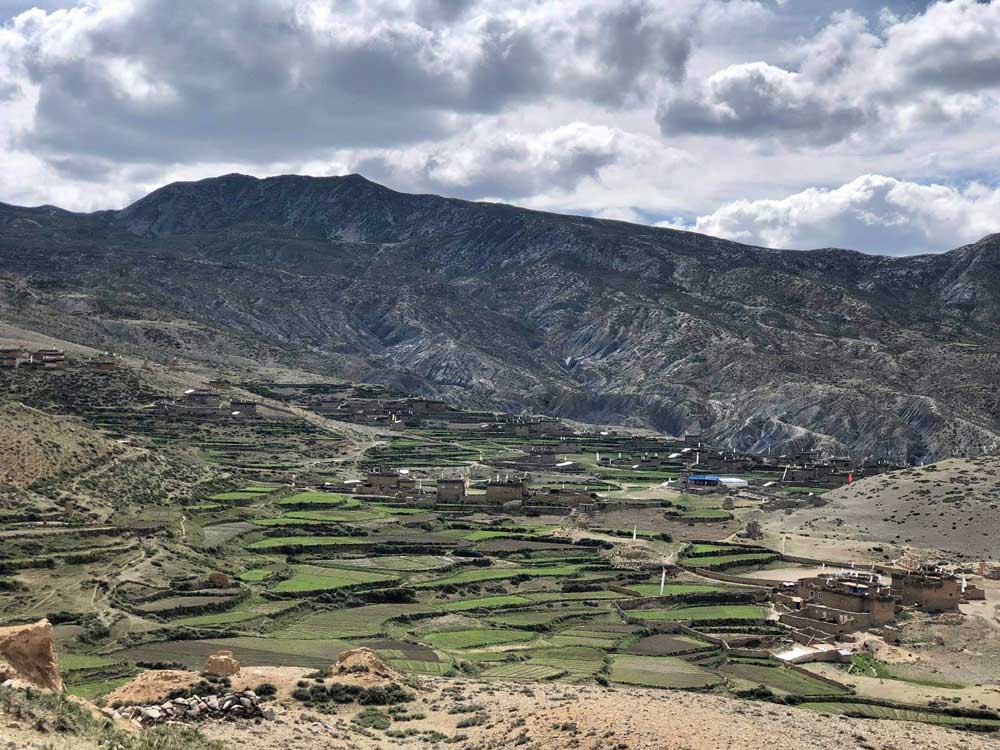
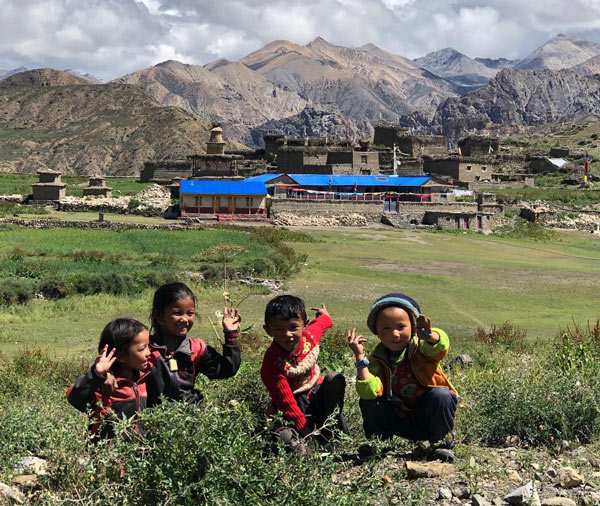
The school at Komang was jointly founded in 2008 by Christophe Carpenter of France and Tulku Lama (Tulku Dorjee Tsewang), a revered Rimpoche. Tulku Lama and the villagers constructed the school, Christophe provided the funding.
Prior to 2008, a few children had gone to school at Saldang, a full day away. This required them to leave their home and board with a family in Saldang village.
In 2009, Christophe died in a para-sailing accident. His daughter tried to carry on funding the school but found it impossible while raising her own young family. For a period of time the school barely survived, somehow operating with only about half of the resources required.
When I visited Komang in 2015 it was not operating. During that same year, a woman from Germany and a group from Sweden trekked the same route as ours and, after learning of the school’s situation, provided some funding.
Altitude Project began helping in 2017. Along with the Tripod of Koma (Sweden), Hildegard from Germany and, of course, Peter Werth of Himalaya Currents who seems willing to help wherever extra support is needed, the school has relatively stable funding.


As in all the schools we support, the children are taught not only the national curriculum of Nepal, but also their Tibetan language, history and culture and basic Buddhist philosophy. Children receive a modern education, and local culture and ancient traditions are preserved.
Basic literacy skills are taught to villagers in the after-school hours. They often have 20 students that are eager to learn to read and write, ages 20 to mid 40’s, many of them women.
The school has a greenhouse that provides fresh vegetables for student lunches.

In 2017, Altitude Project provided funds to construct a new toilet block at the school, which was desperately needed – a fact I can personally attest to! The new block has a separate toilet for girls and boys. read more
Lack of access to a separate toilet facility at school is a significant barrier to a girl’s continuing education. The school only teaches to grade 5, but because some students start late, they range in age up to age 16. A separate toilet can enable menstruating girls to further their education.
In 2018, after lobbying the government for several years, the school received a grant of 600,000 Nepalese rupees (~$6,500) to install a metal roof over the school. The school was originally built in the traditional way using cham (willow / poplar sticks), stone and earth for the flat roof that is typical in the region. In the high desert environment this method had worked, but a changing climate has brought heavy, often destructive, rainfall and a better solution was needed.
The first image is the school with the original roof.
They chose a blue roof because, in Buddhism, blue symbolizes Peace.
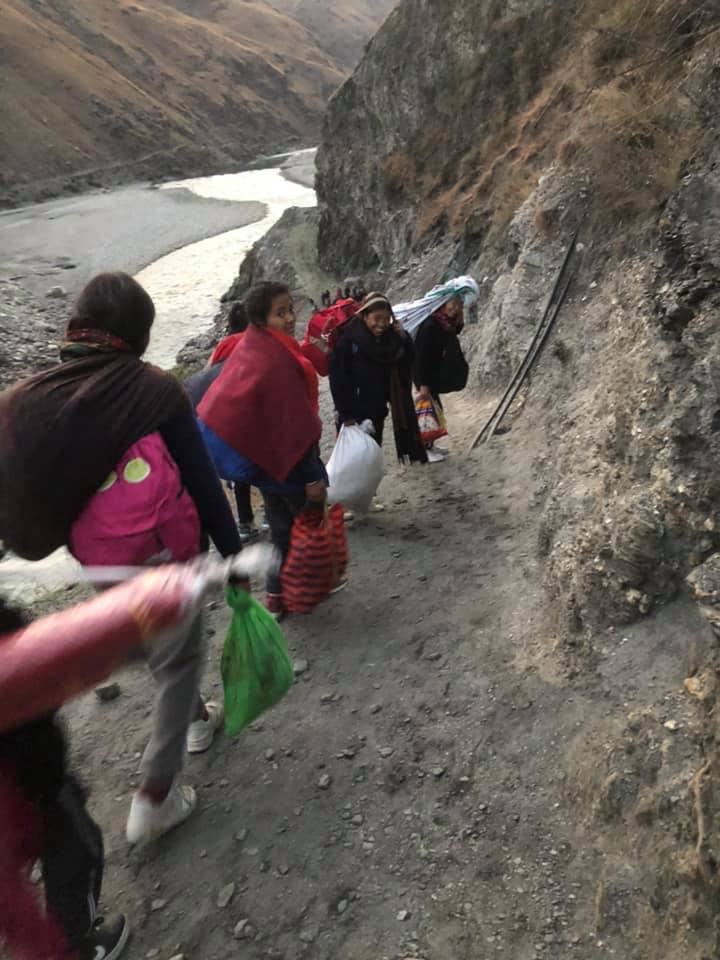
In March 2020, the children at the Himalayan Komang Hostel in Kathmandu, fled the city for their home village before the lockdown. They asked if we could help with some warm clothes. We wish we had helped with more.
They walked for 8 days, from three in the morning until seven in the evening. With the exception of one night, they slept outside. Once they reached the Upper Dolpo at Dho Tarap and beyond, the snow was extremely deep and heavy, and the avalanches were terrifying.
They all say that the joyful reunions in Komang were worth it, some of the children had not seen their parents for five years!
Because of covid restrictions there was only one teacher at the school so the children who had completed grade 10 or higher became the teachers. (Grade 10 is the mandatory requirement for students in Nepal.) Nyima, the school coordinator, taught students in classes 10–12.
Overall, it was a remarkably successful year despite the unusual circumstances. Nyima injected new energy into the school by creating two “house teams” that competed in literacy, cultural dance, and sport. Trophies were made by a local carpenter. And there was an award for the top student as well!
- Literacy Cup
- Sports Cup
- Culture Cup
- Student of the Year




